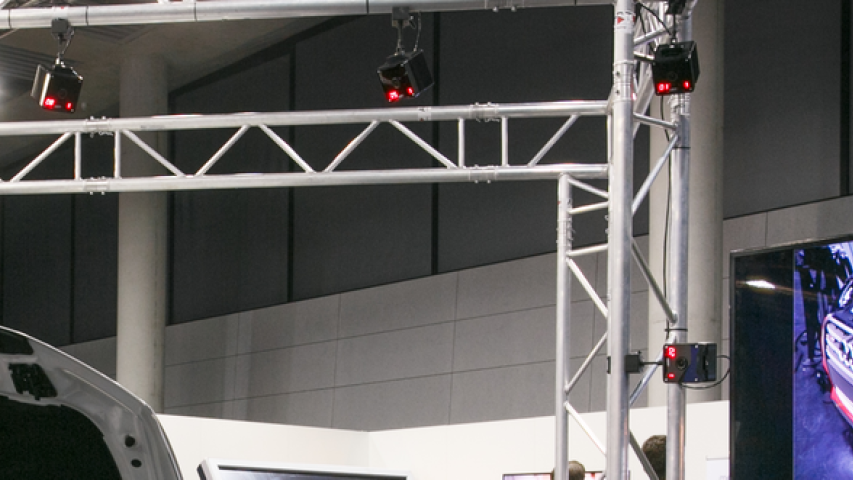New Simulation Center makes experience next to real
In April 2014 the $35 million center on the Health Science campus of The University of Toledo (former Medical College of Ohio), was introduced to the public. UT officials described it as the most advanced health-care training facility in the country.
The 65,000-square-foot center is equipped with innovative technology to enhance education and skills, at all levels of learning, in medicine, nursing, pharmacy, respiratory therapy, and all the other health professions. The Center is also designed to support The University of Toledo Colleges, including Engineering, Communication and the Arts, and Natural Sciences and Mathematics. The UT-IISC is built on a tri-center concept consisting of a Virtual Immersive Reality Center, an Advanced Clinical Simulation Center, and a Progressive Anatomy & Surgical Skills Center.
While many medical and nursing schools and teaching hospitals use simulation models and simulated healthcare settings to train and educate students, the UT-IISC is one of the first to integrate 3D and Virtual Immersive Reality (VIR) technology with the more traditional clinical simulation technologies. This enhancement greatly expands the modeling and simulation capabilities of training healthcare professionals and, for example allows students to view (end even fly through!) the human body in 3D from the cellular level to the whole human body.
This combination of experiential, interactive hands-on training offers new opportunities for learning, teaching and research in that learners can easily go from the Virtual Immersive Reality Center to the Advanced Clinical Simulation Center and then advance to the Progressive Anatomy & Surgical Skills Center and back again. The world’s first five-sided LEC, virtual immersive environment (ISpaceTM) plus a large curved interactive three-dimensional wall is housed within the Virtual Immersive Reality Center. The Advanced Clinical Simulation Center houses an elliptical hospital consisting of an operating room, trauma, intensive care unit, and labor and suite built around a master control room. Each room is home to high-tech human patient simulators and an A/V recording system that captures the performance of the learners, the human patient simulators can do just about anything a real patient does while the A/V recording system allows for the “all important” debriefing that follows the simulation experience. UT officials said the UT-IISC provides opportunities for budding doctors, nurses and other health-care providers to work seamlessly as members of a team, getting a feel for what it will be like to care for patients, alongside the other professions. The University of Toledo Medical Center staff also use the UT-ITSC for staff development in an effort to always improve patient safety and quality of care.
Why ART?
- Fast & smooth data transfer
- ART tracking fulfills the requirements for a fast and smooth data transfer.
- Accurate & stable tracking
- A very accurate and stable tracking system is required when using these environments in medical research and training / education.
- Direct input from the user possible
- Direct input from the user immersed within a simulation was required.
ART Tracking Solution
The ART tracking cameras are used within the Virtual Immersive Reality Center if the UT-IISC specifically with the large curved LED CAD Wall and the ISpace Immersive Environment, ART tracking was chosen for these two environments because the UT-IISC wanted the learners to be totally immersed and the learners in the audience to feel like part of the experience as well.
The 3D / VIR equipment within the Virtual Immersive Reality Center consists of:
- Large Curved LED CAD Wall, measuring 28’ by 9’; 37 million pixels and accommodating larger audiences (approx. 30). It provides a 180-degree viewing experience; ART tracking capabilities; stereoscopic glasses for 3D viewing and flexible seating.
- I-Space Immersive Environment: First in the world, 5-sided, seamless LED immersive environment; designed for one to three individuals; Images are processed by 18 computers powering 34 synchronized projection engines. Provides fully immersive environment utilizing ART tracking capabilities and stereoscopic glasses.
- 2 Flat Screen LED CAD Walls: Ideal for interactive presentations in both 2D and 3D stereoscopic projection; in two smaller rooms designed for smaller groups.
- Theater: 98 seats; designed for larger audiences and corporate gatherings.
Set Up
- Large Curved LED CAD Wall + 2 Flat Screen LED CAD Walls
- 5-sided, seamless LED immersive environment
- Software programs: EON Reality, Unity, Avizo, Mimics, 3D Studio Max, Maya
- 5 x ARTTRACK3, TRACKPACK4 systems + 2 TRACKPACK/C
- Input devices: Flystick2, Head tracking







